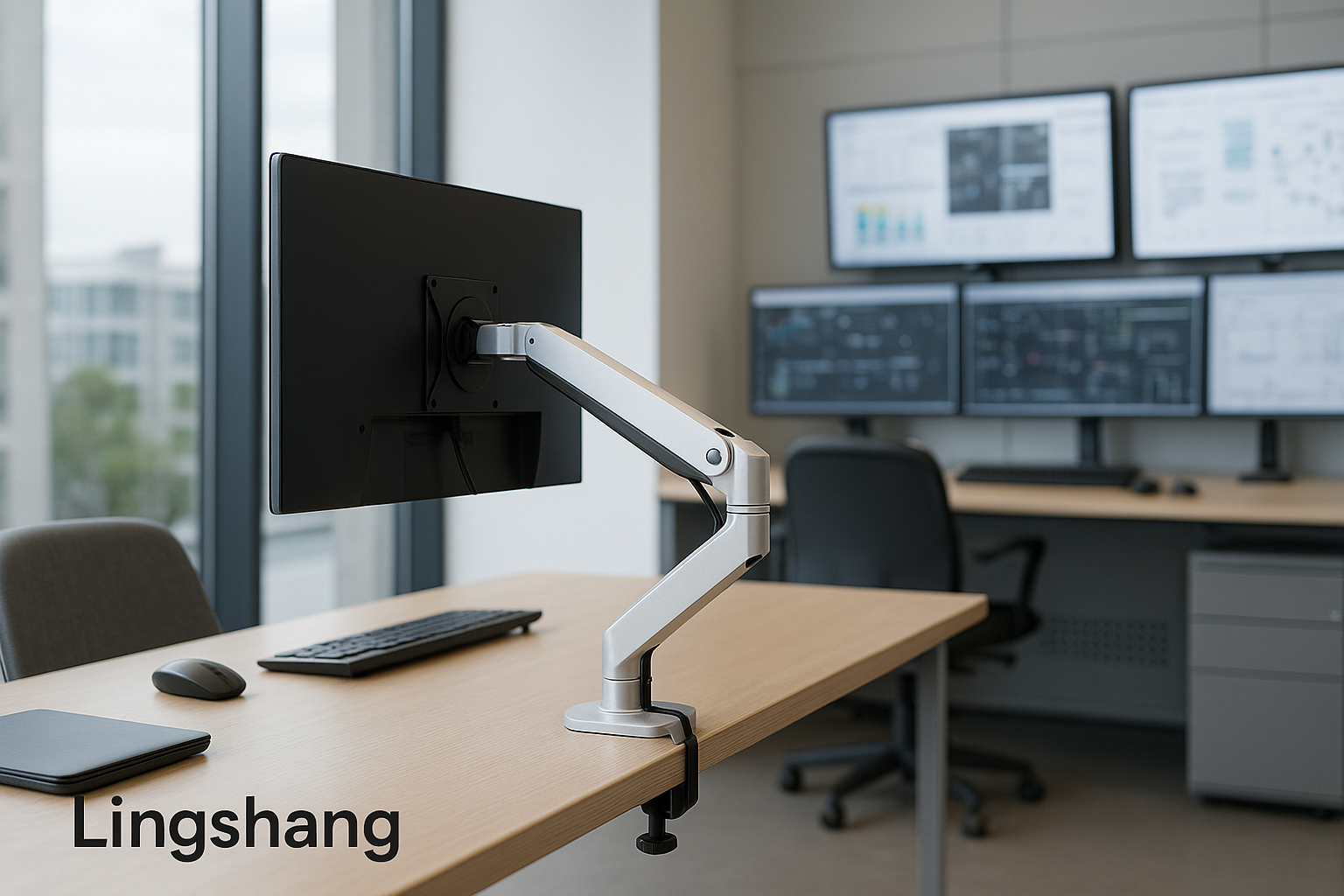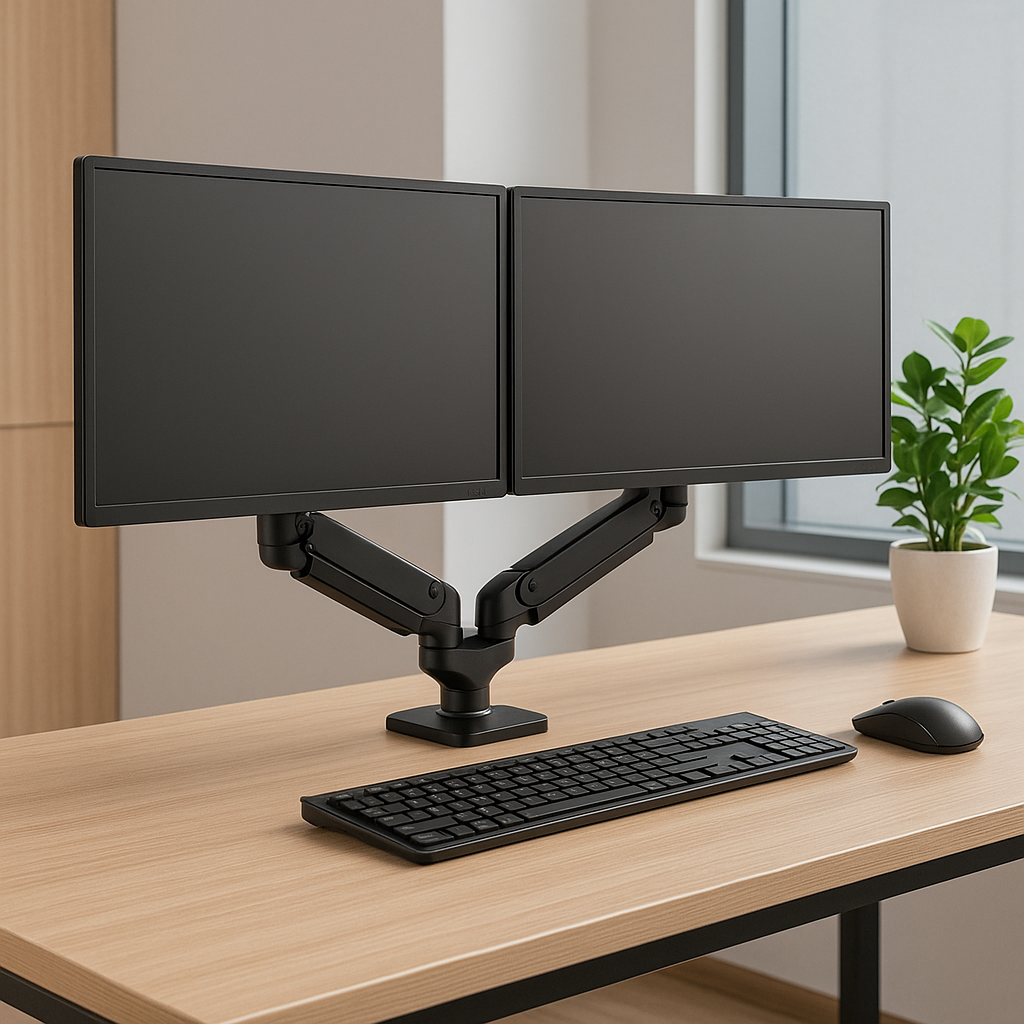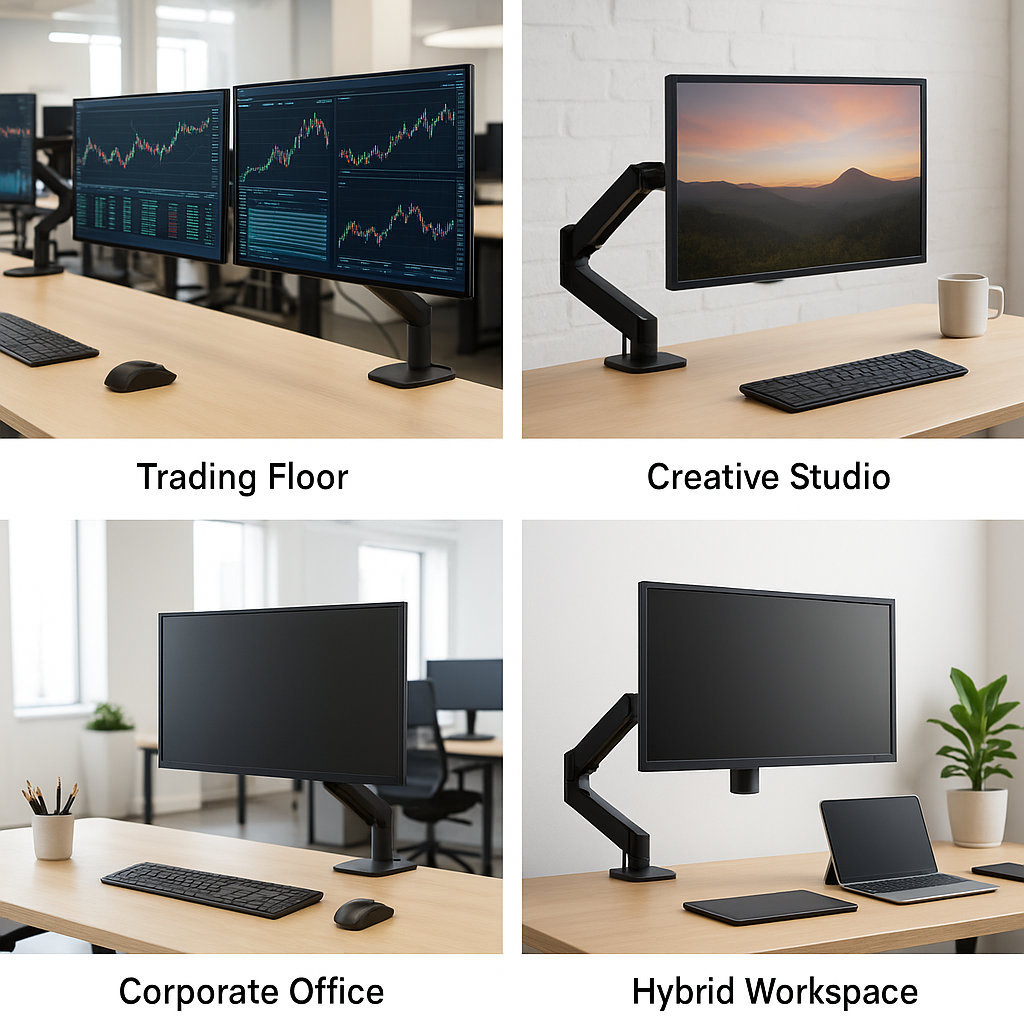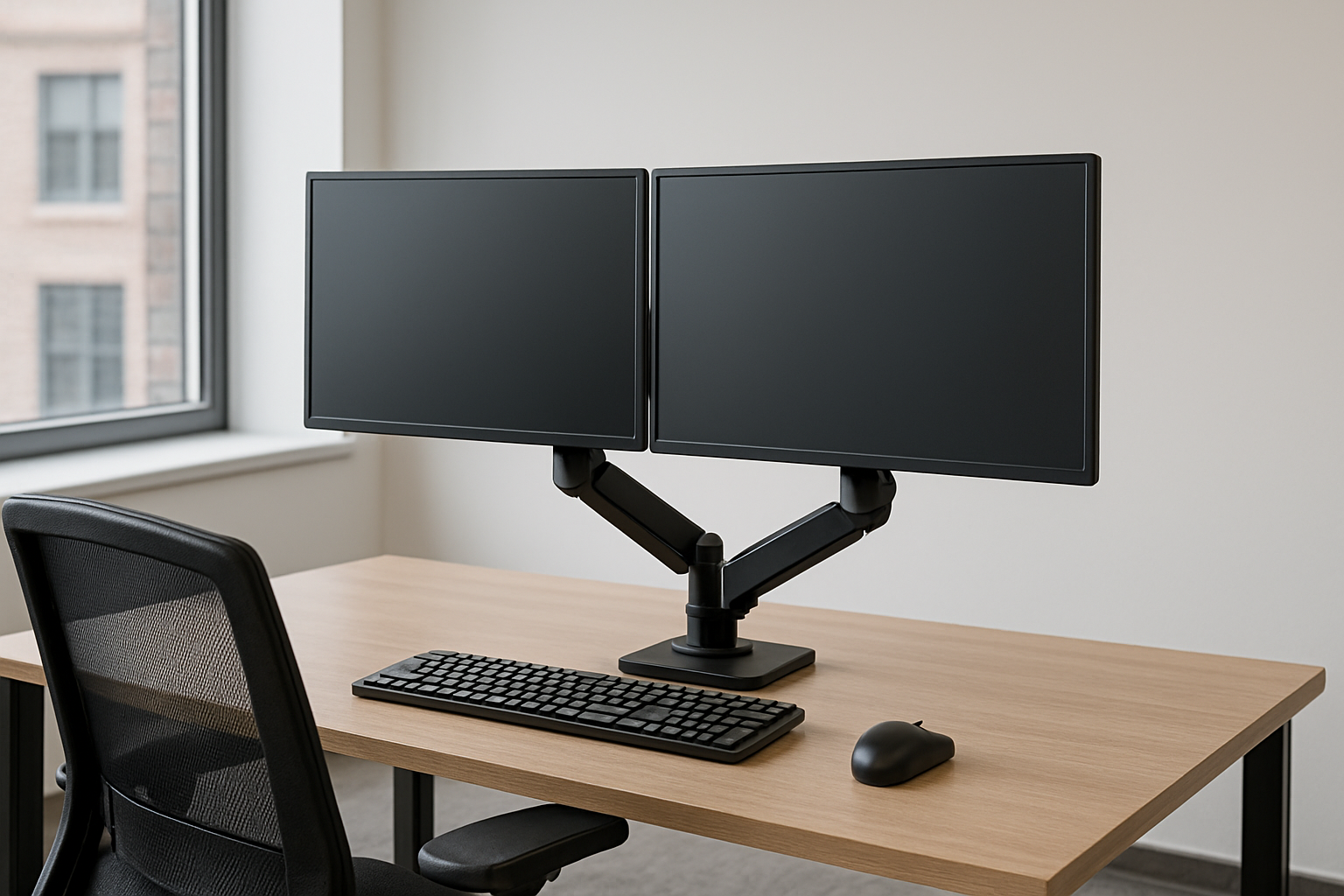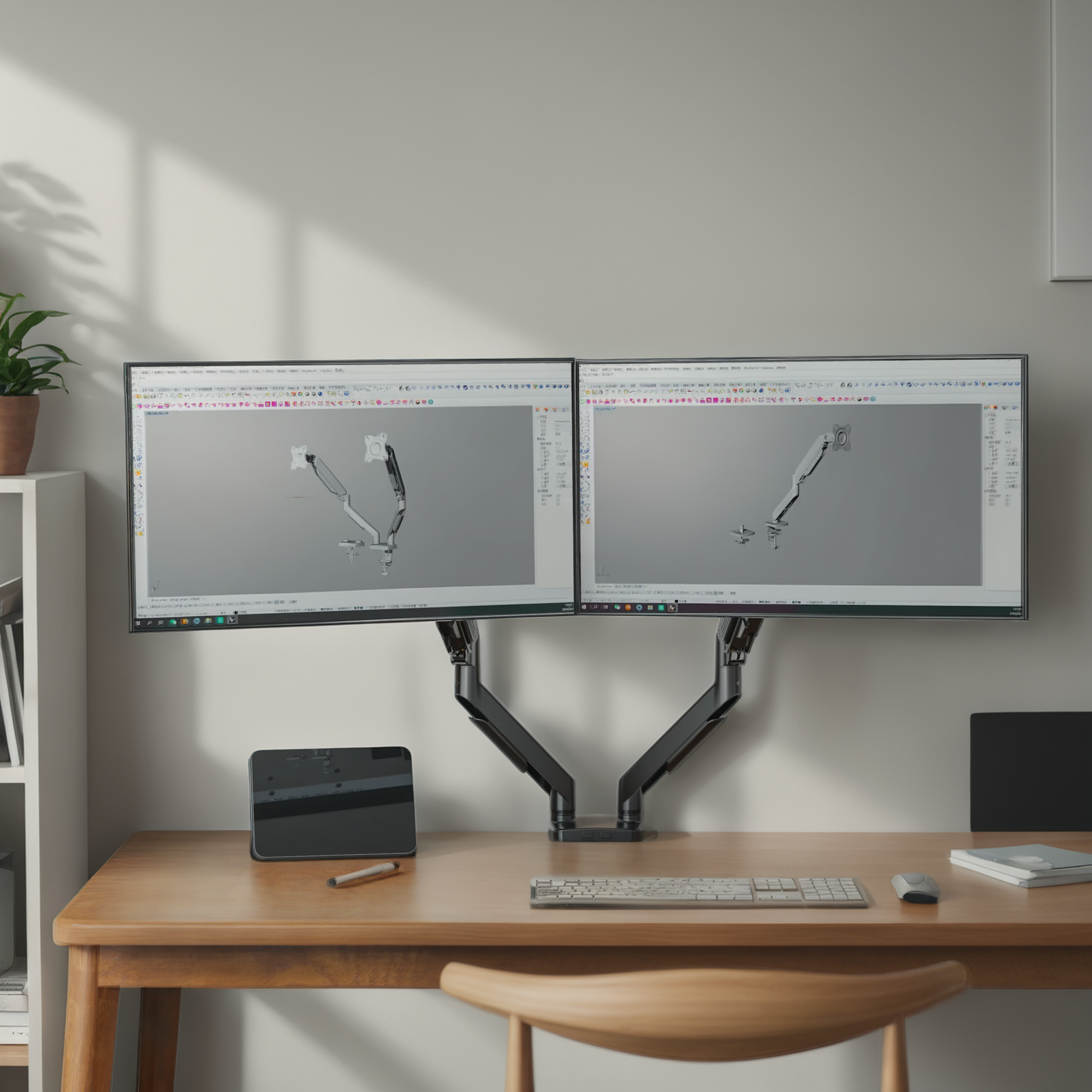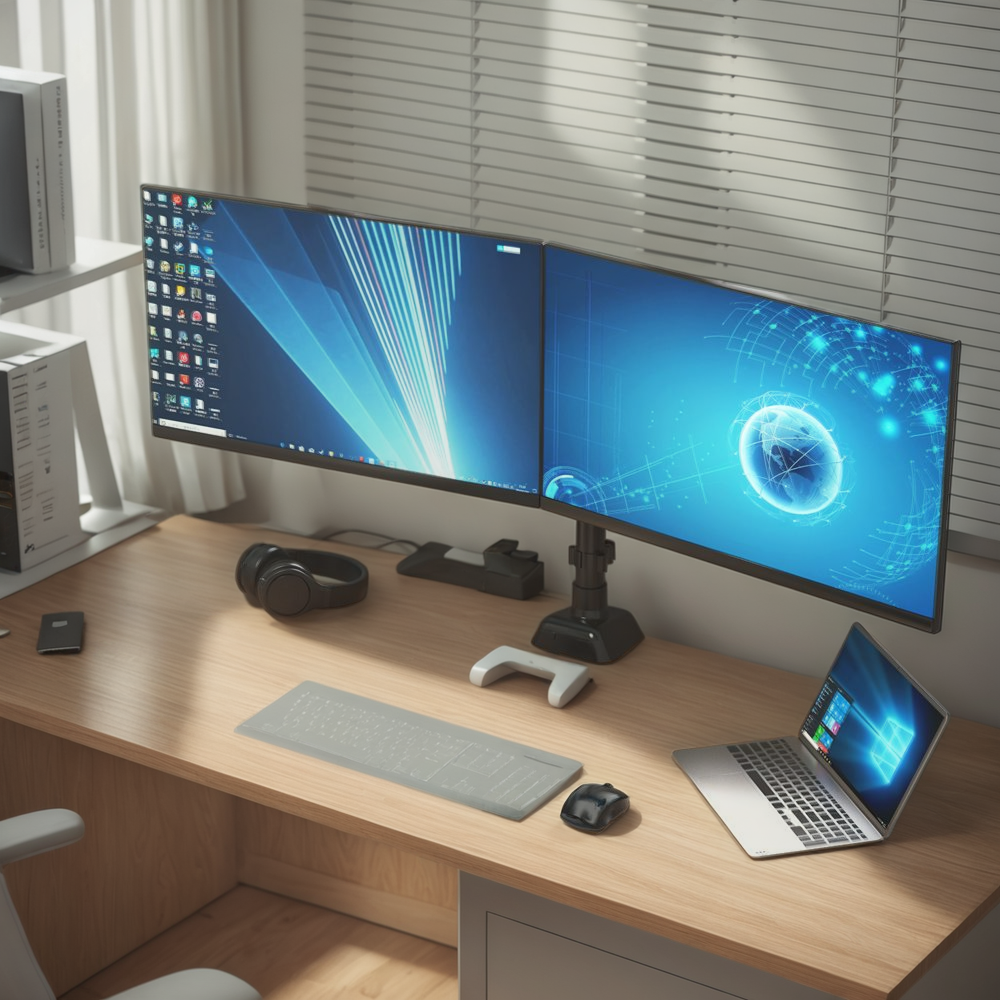
5 Things to Check Before Buying a Monitor Mount
A monitor mount can transform your desk—freeing up space, improving posture, and boosting comfort. But only if you choose the right one.
Too many users buy mounts thatdon’t fit their screen, strain under weight, or don’t match their desk setup. Let’s fix that.
Here are five must-check factors before you buy.
1. Monitor Weight and Screen Size
Not every mount fits every screen.
-
Check your monitor’s weight(usually in kg or lbs). If it’s too heavy for the arm, the screen may droop over time.
-
Measure thescreen sizediagonally (in inches).
-
Confirm the mount’s load capacity matches or exceeds your screen specs.
Example: Most 27” screens weigh 5–8kg. Ultrawide or curved monitors are heavier—make sure the mount you choose,is built for that weight class.
2. VESA Compatibility
VESA is the industry standard for monitor mounting. Your screen should have four screw holes arranged in a square or rectangle.
-
Check your monitor’s VESA pattern—most are 75x75mm or 100x100mm.
-
Confirm the mount supports that size.
-
Avoid non-VESA monitors unless you have an adapter.
3. Desk Compatibility: Clamp, Grommet, or Wall Mount
Your desk matters more than you think.
-
Clamp mount: Fastens to the edge of your desk. Make sure your desktop isn’t too thick or rounded.
-
Grommet mount: Uses pre-drilled holes for center positioning.
-
Wall mount: Requires a strong, stable wall and installation tools.
Measure your desk edge and check the supported thickness. Lingshang’s mounts typically support10–80mmdesk thickness for clamp style.
4. Adjustability Options
Do you need simple tilt and height adjustment, or full articulation?
-
Fixed armsare affordable but rigid.
-
Articulating armsgive more freedom of movement.
-
Gas spring armsallow for smooth height changes—great for sit/stand desks or shared setups.
If you plan to adjust your monitor frequently, go for an ergonomic monitor mount with full tilt, swivel, and height control.
5. Number of Screens and Workspace Layout
Are you using one screen now, but thinking of upgrading to two?
-
Choose asingle-arm mountwith modular add-ons if you plan to expand later.
-
If you’re adesigner, data analyst, or trader, adual-arm setupmay suit you better.
-
Pay attention toscreen width and desk depthwhen positioning two arms side by side.
Why Getting It Right Matters: What the Research Says
According to the U.S. Occupational Safety and Health Administration (OSHA),monitor positioning is a key ergonomic factorthat directly affects worker comfort and musculoskeletal health. Poor screen height or distance can lead to:
-
42% increase in neck and shoulder strain
-
32% reduction in productivitydue to frequent eye refocusing and posture shifts
-
Higher risk oflong-term discomfort or injury
A study published in theJournal of Applied Ergonomicsalso found that usingadjustable monitor mountssignificantly improved spinal alignment and user satisfaction in office workers over a 6-week period.
This reinforces the importance of choosing the right mount—not just for convenience, but for long-term health and performance.
Make the Right Choice the First Time
Choosing a monitor mount isn’t just about style—it’s aboutstability, compatibility, and comfort.
Avoid the hassle of returns or posture problems by checking:
Monitor weight & size
VESA mounting pattern
Desk compatibility
Adjustability range
Workspace needs
Browse ergonomic monitor mount solutions tailored to your needs on thelingshang homepage.
Need expert advice? Reach out through ourContact Us page—we’re happy to help you find the perfect fit.

